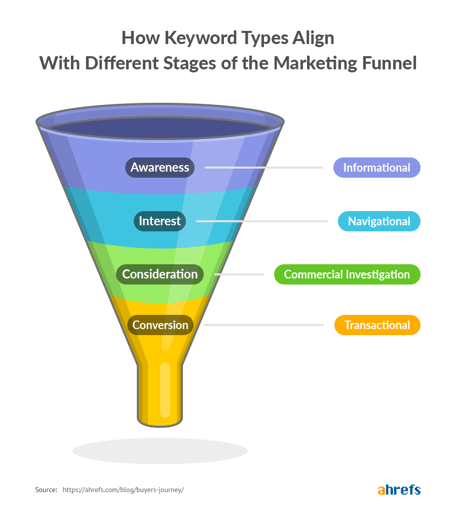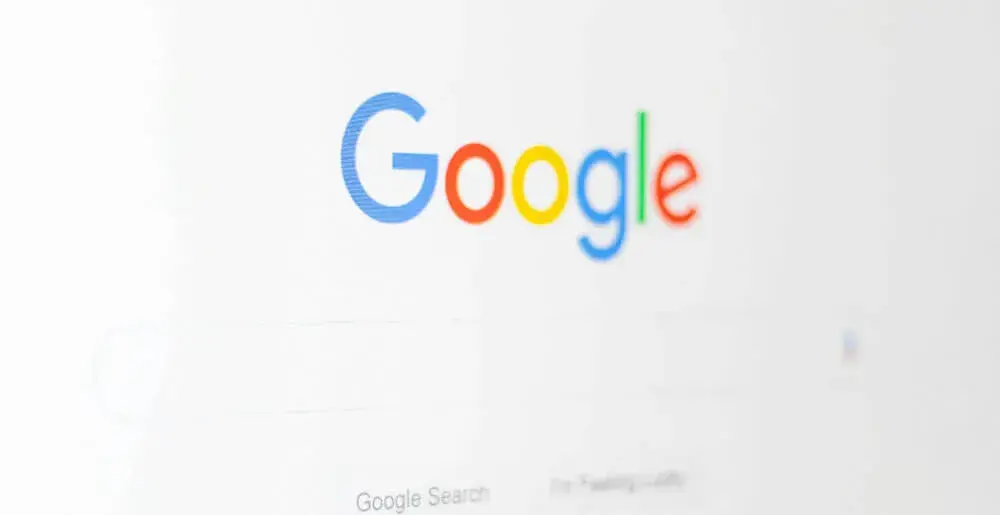Understand what drives users to your website to improve keyword targeting and ultimately boost your ranking.
Have you ever asked someone a question and received an entirely unsatisfactory answer? Maybe their answer was too generic, confusing or there was some kind of misunderstanding that led them to an entirely unrelated topic. When you ask a question, you usually have some idea of the kind of answer you’re looking for. For example, if you ask “where did you get this cheese?” you probably want to know the name of a store. This idea of your ideal answer is search intent.
When it comes to online searching, search intent is one of the most important ranking factors for Google but it’s often overlooked. Understanding the intent behind certain search queries can help you create relevant, valuable content that speaks to your chosen keyword. Whether you’re practicing keyword targeting or just trying to find the best way to capture new leads, search intent should play a large role in content creation decisions.
What is Search Intent and Why is it Important?
Sometimes called user intent, search intent breaks down to a simple concept: what are people looking for? And it’s important to Google because it is the search engine’s whole purpose—finding exactly what you’re looking for in 0.2 seconds. So, if you want to boost your Google ranking and end up at the top of results, you need content that speaks directly to the search intent of your chosen keyword.
There are three aspects of search intent to consider when you want to create content around a specific keyword:
The format should match the user's intent.
If someone searches “Thriller by Michael Jackson” they’re probably not looking for a blog post about how the song rose to fame. They most likely want to watch the Thriller video and Google knows this, so it populates a plethora of YouTube videos at the top of the SERP. The type of content you create should match the user’s intent. Even if you find a keyword with a high search volume and low difficulty, if the format doesn’t match what you intend to create (blog, video, list, eBook, etc.), then you won’t likely see the return you were hoping for.
Answer the question posed by the user.
Your keyword might just be a word or phrase, but odds are it relates to a bigger question users are hoping to answer. The thing to remember here is that people have short attention spans. They won’t comb through 2,000 words and analyze your blog to find the information they need. So instead, you want to make sure the question is answered plainly in your blog post so Google can pull out the relevant information and show it to the user. This encourages them to visit your page because they know you have the information they want.
Supporting information should be relevant and engaging.
Short attention spans can create huge bounce rates if you don’t keep users engaged. So as you craft your content, answer the primary question first, then try to anticipate the next questions and provide those answers as well. This can captivate an audience, keep them on your page and boost your conversions because you’re continuing to provide value beyond (but related to) their initial search query.
You can even go so far as to consider specific audiences in various steps of the buyer's journey. The more specific content you create, the more users you can reach in every stage of the sales funnel. When you’re speaking directly to your audience about their specific problem or mindset, you’re more likely to increase your conversions because you’ve delivered answers to their questions and solutions to their problems.
So to answer your question “Why is search intent important?”
- You need the most relevant content to the query to rank in the top search results.
- Bounce rates decrease when you deliver exactly what users are looking for.
- Content that considers the buyer’s journey and next steps is more likely to increase conversions.
4 Common Types of Search Intent
A single keyword intent can easily fit into multiple search types, but to make things easier, there are four main categories of search intent. Understanding which category your user intent falls into can help you to better position your content by using helpful keyword modifiers and appropriate formats.
Informational Keywords
Most people using search engines will fall into this category of search intent. They’re looking for information, researching a question or trying to solve a problem. In a nutshell, it’s people performing research.
The most common queries for information search intent are “how to” and “what is” questions, such as “how to change a lightbulb” or “what is astrophysics?” Single keywords and generic phrases are popular in this category and leave you with a good bit of wiggle room to provide relevant supporting information. You could create educational blog posts, webinars, social media posts or any other type of content that matches the search format.
This type of search provides a unique opportunity to rank in the People Also Ask box, which can help boost your Google ranking as well. You can even optimize for featured snippets in your search results if you want to highlight a specific type of information by using keywords in your meta description.
Navigational Keywords
This category is typically composed of users who know what they want. They’re looking for a specific business or website, so they use branded keywords or very specific keywords. In this category, you might see more longtail keywords and lots of company names and business industries. This type of search intent has less opportunity to capture new users unless you fall into the specific category they’re searching for.
Commercial Investigation Search Queries
Users with this type of search intent are typically in the middle of their buyer journey. They are investigating products, brands or services before making a purchase. Depending on where they are in the sales funnel, they could be looking broadly at different options or have it narrowed down to one type of product or one brand that they want to buy from.
Specific keyword targets and detailed search phrases often work best to match this type of search intent. The more specific you can be, the easier it is to market to a specific audience that’s in the stage you want to address, such as awareness or consideration.
Transactional Keywords
When users are ready to make a purchase, they fall into the transactional search intent category. They aren’t searching for products or comparing specs anymore; they’re just trying to find a place where they can buy the product they’ve already decided on. This is where your buyer intent keywords come in—keywords users search when they’re ready to make a purchase.
Terms in these searches often include words like “price” and “cost” as users try to find the best deal. This type of search intent typically yields results like product pages, maps to locations, paid results or reviews. This is a category where you can gain organic traffic by optimizing your product, landing, and sales pages with relevant keywords to attract potential customers who have a buying mindset.
Guidelines to Improving Keyword Targets Based on User Intent
With the four types of search intent in mind, you can start optimizing your content to rank higher in the SERPs. I touched on how the buyer's journey can correlate with search intent in the previous sections, but here I want to really dive into that concept.
Searchers have different intentions that often correlate with the different stages of the buyer’s journey. Therefore, you should map your keywords to the buyer’s journey and improve keyword targets based on their purchase intent. In a way, you can turn your traditional marketing funnel into a keyword funnel for content production, just like this one provided by Ahrefs.
In the last section, we talked about the types of keywords that fit into each search intent category. Now we can see how search intent fits within the buyer's journey. Those broad keywords that appear in informational searches cater well to potential customers who are gaining awareness about your brand. The branded keywords in navigational searches help people quickly find and learn about your business. The specific keywords in commercial searches give them information about your products or services. And transactional keywords help you convert those who are ready to purchase.
The key to targeting customers in these different stages is to know your buyer. Having a buyer persona on hand can help you to hone in on what potential customers are looking for, thinking about and any obstacles they might hit along the way. Once you know who’s buying your product, you can map your keywords to match their journey.
For example, let’s say you sell high-quality running shoes and your buyer persona is a 30-year-old man who goes for a run every morning before work. You might start his journey with broad keywords like “high-quality running shoes,” “city running shoes” or “running shoes for men” just to grab his attention. Then you could move into keywords about your running shoes specifically, then how they compare to other brands. Finally, you might pull him in with a keyword that matches your specific line of shoes so he can quickly make a confident purchase.
Okay, that example definitely made it look easy. The truth is, keyword research is a process, and when you allow the customer journey to inform your choices, it can help drive a robust and successful content strategy. Let’s take a look at the steps:
Determine which phase of the customer journey you want to speak to.
This choice will guide your keyword research to match the buyer intent so you know to look for broad upper funnel keywords, specific lower funnel keywords or something in between.
Find keywords that are relevant to your brand, product or goal.
You want keywords that you can effectively create content around, not just high-volume keywords that are placed haphazardly into your content. Think about what product or service you’re offering, what problem it solves and how your buyer persona might go about searching for you. Focus on keywords they might type into Google based on where they are in their journey.
Create the right kind of content to capture your target audience.
The format of your content should match what the top results on the SERP are presenting. If you notice a keyword isn’t producing the format you intend to create, keep searching for another that aligns with your content. Remember that format is factored into relevancy when Google analyzes your content, so you want to make sure it matches other top results for a chosen keyword.
Choose keywords that speak to the appropriate stage of the buyer’s journey.
At the beginning of this process, you determined who you wanted to speak to. Don’t let that decision fall away as you sift through pages of possible keywords. After you’ve selected a few keywords you’d like to use, reassess if they meet your customer in their current stage and speak to the information needs they have at the level of the funnel.
We all know that keywords are defined by their difficulty and search volume, and the ones with the highest search volume and least competition are the easiest to rank for. So naturally, these are the keywords we all strive for. One common mistake, though, is looking only at a keyword’s stats and not at how it relates to search intent. A high-volume keyword is only a great opportunity if you can speak to the people searching for it, which is why search intent should always be the first criterion your keywords meet.
Another mistake people make is forgetting their metadata. Title tags, headers and meta descriptions are all opportunities to capture keywords and draw in users. A great meta description (active voice, 155 characters, keyword included) can help draw in potential customers and increase your click-through rates (CTR). Informative headings can help users quickly find information and titles with the primary keyword help you rank higher in the SERPs.
Make Search Intent and User Experience Your Top Priority
Creating content is a great way to capture organic traffic and increase your Google ranking, but you have to remember to meet the people where they are. Consider your buyer’s journey and craft content that speaks to their mindset and struggles in that section of the marketing funnel. When you optimize content to match specific user intents, you have a greater chance of increasing your CTRs, conversions and customers.
At Knowmad, we specialize in helping businesses optimize their SEO through practices just like this. If you’re interested in how we can help you, learn more about our SEO services and how we can help you match your content to search intent. For a more personal experience, opt for an SEO assessment from one of our specialists to see how we can help your brand optimize marketing efforts by targeting the right buyers at the right time.
.webp?width=900&height=548&name=wyatt-mobile%20copy%20(2).webp)


